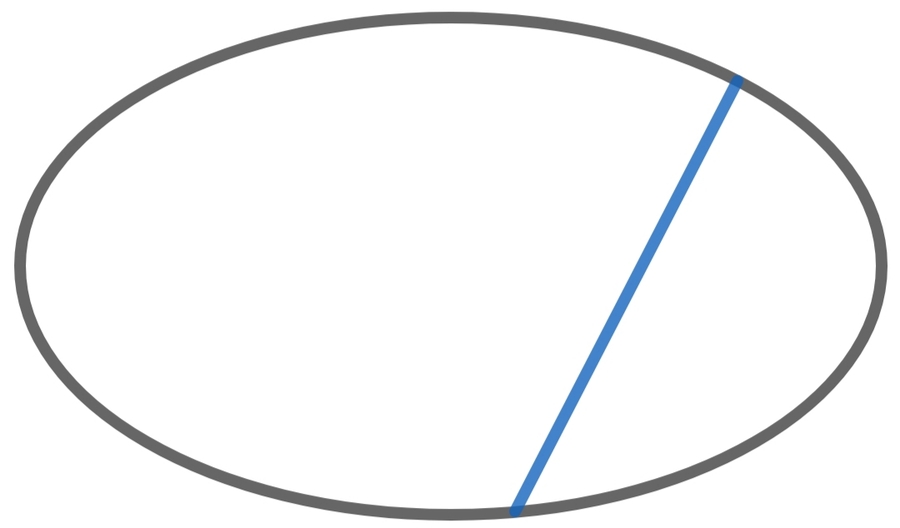Minimizing Chord Length

Let a and b be the lengths of the semi-major and semi-minor axes of an ellipse, respectively and let e be the eccentricity of the ellipse.
Consider a chord of the ellipse which is also a normal to the ellipse. Denote l as the minimum possible length of such chord.
Analysing such chords, we can show that
- l = 2 b , when e ≤ 2 1 .
- l = m , when e > 2 1
Find m .
This section requires Javascript.
You are seeing this because something didn't load right. We suggest you, (a) try
refreshing the page, (b) enabling javascript if it is disabled on your browser and,
finally, (c)
loading the
non-javascript version of this page
. We're sorry about the hassle.
1 solution
If possible, will you also write an explanation to this problem , please?
The normal to the ellipse at the point ( a cos θ , b sin θ ) has equation a x sin θ − b y cos θ = ( a 2 − b 2 ) sin θ cos θ which meets the ellipse again at the point ( a cos ϕ , b sin ϕ ) , where a 2 sin θ cos ϕ − b 2 cos θ sin ϕ sin ( 2 ϕ − θ ) [ a 2 sin θ sin ( 2 ϕ + θ ) + b 2 cos θ cos ( 2 ϕ + θ ) ] a 2 tan θ tan ( 2 ϕ + θ ) + b 2 = ( a 2 − b 2 ) sin θ cos θ = 0 = 0 Thus the length of this chord of the ellipse is D ( θ ) , where D ( θ ) 2 = a 2 ( cos θ − cos ϕ ) 2 + b 2 ( sin θ − sin ϕ ) 2 = ( a 4 + b 4 − ( a 4 − b 4 ) cos 2 θ ) 2 2 a 2 b 2 ( a 2 + b 2 − ( a 2 − b 2 ) cos 2 θ ) 3 Turning points of this function, for 0 ≤ θ ≤ 2 1 π , occur at θ = 0 , 2 1 π . If e > 2 1 we also have a turning point at 2 1 cos − 1 ( a 4 − b 4 a 4 − 4 a 2 b 2 + b 4 ) (the condition e > 2 1 is what is required to ensure that − 1 < a 4 − b 4 a 4 − 4 a 2 b 2 + b 4 < 1 ) and D ( 0 ) 2 = 4 a 2 D ( 2 1 π ) 2 = 4 b 2 D ( 2 1 cos − 1 ( a 4 − b 4 a 4 − 4 a 2 b 2 + b 4 ) ) = ( a 2 + b 2 ) 3 2 7 a 4 b 4 = 2 7 a 2 F ( b a ) where F ( x ) = ( 1 + x 2 ) 3 x 4 . Now F ′ ( x ) = ( 1 + x 2 ) 4 2 x 3 ( 2 − x 2 ) , and so F ( x ) ≤ F ( 2 ) = 2 7 4 . Thus the minimum chord length is 2 b if e < 2 1 , and ( a 2 + b 2 ) 2 3 3 3 a 2 b 2 = a 2 b 2 ( a 2 + b 2 3 ) 2 3 if e > 2 1 .